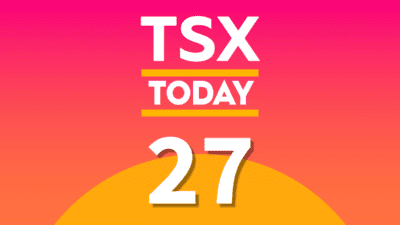In the government’s ongoing quest to create a fourth national wireless carrier, it has no doubt stepped on the toes of the current big three telecom companies. Most recently, the government’s spotlight has been on Rogers Communications Inc. (TSX: RCI.B)(NYSE: RCI), as Rogers is attempting to finalize a $300 million deal to purchase the unused wireless spectrum from Shaw Communications Inc (TSX: SJR.B)(NYSE: SJR).
Shaw acquired this spectrum back during the 2008 spectrum auction at a price tag of $189 million. Since winning this multi-province block of spectrum, Shaw has withdrawn its plans to build a wireless network and has built up its Shaw Go WiFi program instead.
Government acts almost a year after announcement
Now the five-year moratorium on transferring the 2008 spectrum has expired, and Shaw is looking to sell. The deal was first brokered last year when Shaw sold its shares of Mountain Cable to Rogers in exchange for Rogers’ 33% stake in TVtropolis (now DTour) and net proceeds of $700 million. Within the deal was an option to purchase Shaw’s no-longer-needed spectrum in the coming future.
Rogers has already incurred a $50 million non-refundable charge just for the option to purchase the spectrum, as well as paid a further $200 million refundable deposit to acquire the spectrum in British Columbia, Alberta, Saskatchewan, Manitoba, and northern Ontario.
If the deal is blocked by the government, as rumours say it will be, Shaw would be left with millions of dollars in unutilized spectrum — that is, until it reverts back to the government if it is still unused in another five years. Without the deep pockets of Rogers, analysts expect that Shaw could only get around $150 million for the spectrum and may have to take on minority partnership status with whoever would purchase it.
New CRTC regulations
Coupled with this fourth national carrier rhetoric, the CRTC has now begun to go after Rogers and its policies and contracts concerning roaming rates. The CRTC claims that Rogers has been found to have “clear instances of unjust discrimination and undue preference”.
The CRTC discovered that Rogers was charging new wireless competitors higher rates than what it had been charging other Canadian and U.S. providers. The agreements issued by Rogers also prevented new entrants into the wireless sector from negotiating more favourable rates or conditions with other companies. These types of exclusivity clauses have now been banned by the CRTC.
Rumoured lobbying beginning to bear fruit
This upcoming review of roaming rates by the CRTC could just be the first step in the government’s plan to have greater regulatory control on roaming rates. This type of intervention lines up with the “rumoured requests” by Quebecor, Inc. (TSX: QBR.B), which has made it abundantly clear that unless roaming rate policies change it will remain “unable” to expand beyond Quebec and eastern Ontario.
With the next federal election coming next year, the government will be pulling out all the stops to achieve its goal of a fourth national carrier. This leaves investors weighing the odds on which company to side with.
Rogers has seen its wireless division stumble in recent quarters but will receive a boost when the 2014/2015 NHL season kicks off in a couple of months.
Quebecor is waiting to see if the roaming rate changes make it viable to expand nationally. Not to be forgotten are the sour states of the bankrupt company Mobilicity and the up-for-sale company Wind Mobile, both of which could be picked up by an unshackled Quebecor. If all things line up just right for Quebecor, this could be a prime moment for investors to jump in before the expansion.
This leaves Shaw, which is almost completely immune to these interventions from the government. In addition, its Shaw Go WiFi program is expanding faster than ever, drawing wireless data users off of their monthly data plans and onto the Shaw network.







